Indoor gardening has gained immense popularity in recent years, with an estimated 30-35% of households in the United States engaging in some form of indoor plant cultivation. As more people discover the joy and therapeutic benefits of nurturing plants within their living spaces, it becomes increasingly essential to equip themselves with the right tools and supplies for successful plant care.
This comprehensive guide introduces the top 10 must-have plant care tools and supplies for indoor gardeners, ranging from watering cans and soil moisture meters to grow lights, humidity trays, and plant labels and markers. Each tool plays a crucial role in ensuring your indoor plants thrive in a well-maintained environment, ultimately enhancing the beauty, air quality, and overall well-being of your home.
By investing in these essential plant care tools, you’ll be well-prepared to address the unique needs of your indoor garden and create a flourishing green sanctuary in your living space.
1. Pruners
Pruners play a crucial role in maintaining the health and appearance of your indoor plants. Regular pruning helps promote new growth, remove dead or diseased parts, and maintain a desired shape. There are two main types of pruners to consider for your indoor gardening needs: bypass pruners and anvil pruners.
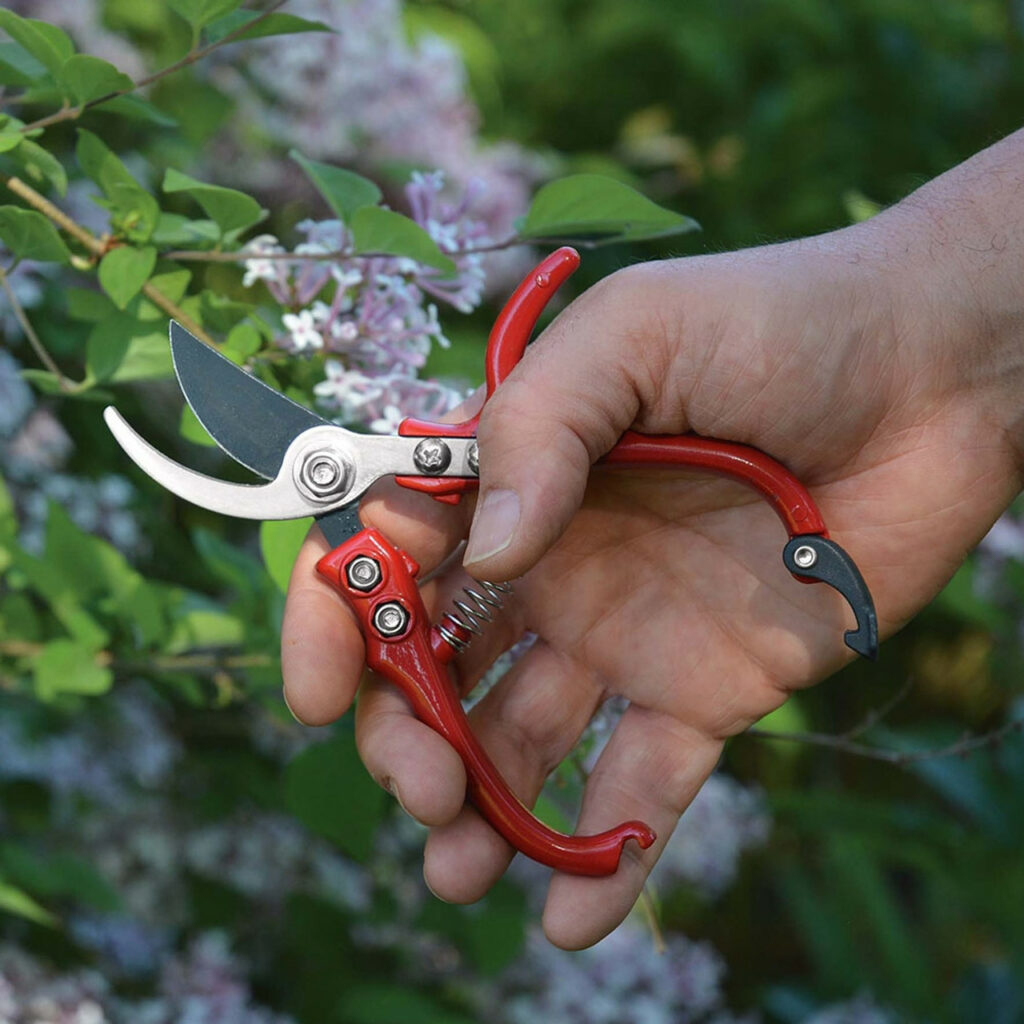
Types of pruners for indoor gardeners
1. Bypass pruners
Bypass pruners feature two curved blades that slide past each other, providing a clean and precise cut. They are ideal for cutting soft, green stems and branches, making them the preferred choice for most indoor gardening tasks.
2. Anvil pruners
Anvil pruners have a single straight blade that cuts against a flat surface, or “anvil.” These pruners are better suited for cutting through dry, woody stems and branches but can crush softer plant material. Anvil pruners are typically less recommended for indoor gardening but can be useful for specific tasks.
Choosing the right pruner for your needs
When selecting a pruner, consider the types of plants you will be working with and the specific pruning tasks you will perform. Bypass pruners are generally more versatile and suitable for most indoor gardening activities. In addition, consider factors such as comfort, durability, and ease of maintenance when making your decision. Ergonomic handles and high-quality materials will make a significant difference in the long run.
Proper pruner maintenance and sharpening
To keep your pruners functioning optimally, clean them regularly to remove any plant residue or sap, and sharpen the blades as needed. A well-maintained pruner will not only be more effective but also extend its lifespan.
2. Watering Can
A good watering can is an indispensable tool for any indoor gardener. Choosing the right one will help ensure your plants receive the proper amount of water while minimizing spills and messes.
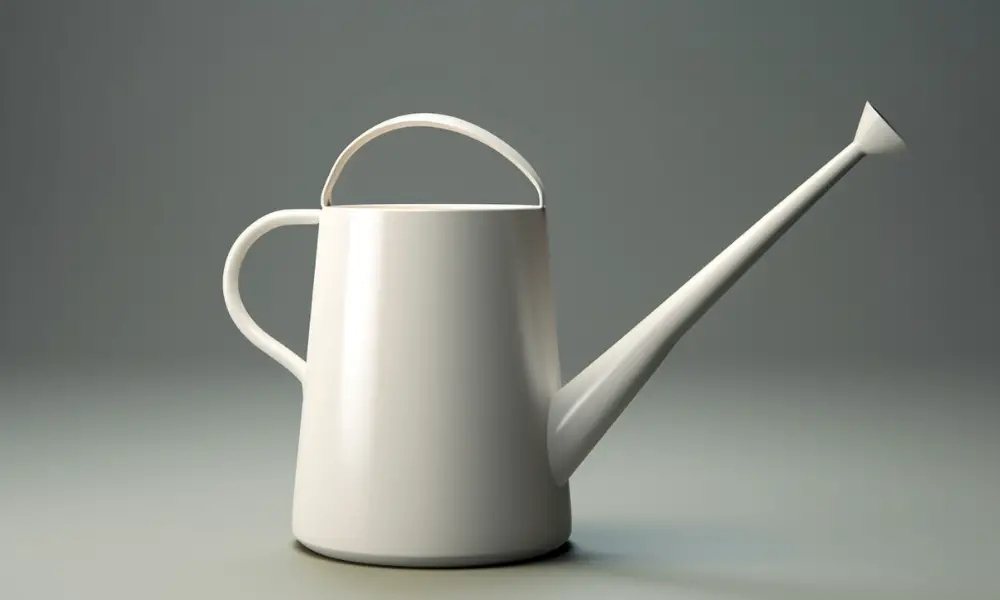
Watering can materials
1. Plastic
Plastic watering cans are lightweight, affordable, and come in various sizes and colors. They are an excellent option for those on a budget or with limited space. However, plastic cans can become brittle over time and may not be as durable as metal cans.
2. Metal
Metal watering cans, typically made from galvanized steel or stainless steel, are more durable and often more stylish than plastic cans. They can be a bit heavier, but their longevity makes them a worthy investment.
Nozzle types for watering cans
1. Fine spray
A fine spray nozzle, also known as a “rose,” is ideal for gently watering delicate seedlings and plants with small leaves. This type of nozzle evenly distributes water, mimicking natural rainfall.
2. Long spout
A long spout nozzle allows for more precise watering, reaching the base of the plant without disturbing the surrounding soil. This type of nozzle is particularly useful for watering plants in tight spaces or with dense foliage.
Choosing the right size for your indoor garden
Select a watering can size that is appropriate for your indoor garden’s size and your physical abilities. A smaller can is more manageable but will require more frequent refills for larger indoor gardens, while a larger can will hold more water but may be more cumbersome to handle. Finding the right balance is essential for efficient and enjoyable watering sessions.
3. Soil Moisture Meter
Proper soil moisture is critical for the health and well-being of your indoor plants. Overwatering or underwatering can lead to various issues, such as root rot, yellowing leaves, and stunted growth. A soil moisture meter is an invaluable tool to help you monitor and maintain the ideal moisture levels for your plants.
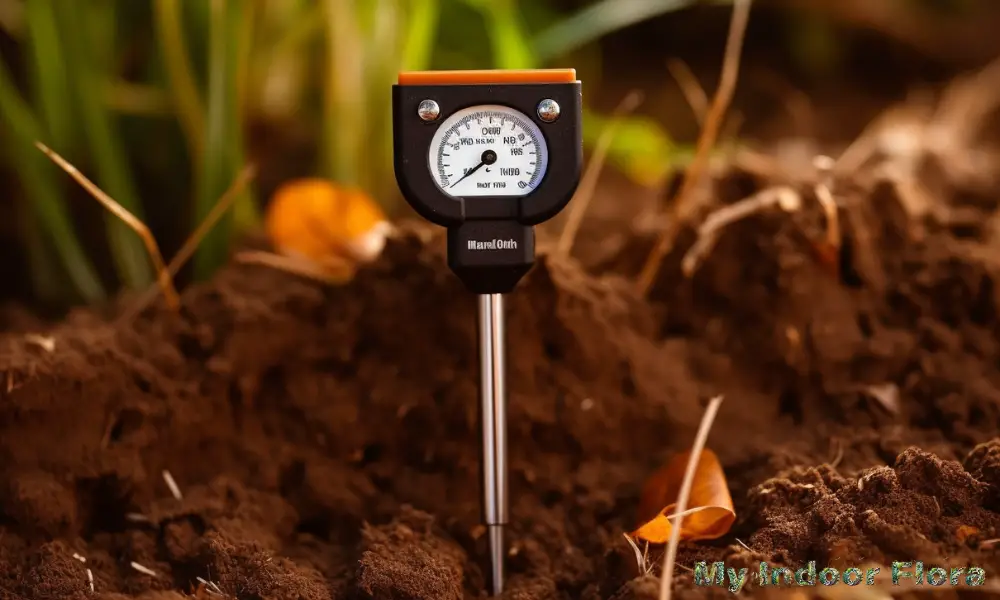
The importance of proper soil moisture
Different plant species have unique moisture requirements, and indoor environments can vary in humidity and temperature. A soil moisture meter takes the guesswork out of watering, ensuring that your plants receive the right amount of water to thrive.
How a soil moisture meter works
A soil moisture meter typically consists of a probe that you insert into the soil near your plant’s roots and a display that indicates the moisture level. Some meters use a numerical scale, while others may have color-coded or descriptive indicators, such as “dry,” “moist,” or “wet.”
Selecting the best soil moisture meter for your plants
When choosing a soil moisture meter, look for one with a durable probe, an easy-to-read display, and, if possible, a moisture scale that correlates to your specific plants’ needs. Some advanced models may also measure factors such as pH and light levels, offering additional insights into your indoor garden’s health.
4. Grow Lights
Indoor plants depend on proper lighting to grow and flourish. Natural sunlight may not be sufficient or consistent, especially in rooms with limited window exposure or during the shorter days of winter. Grow lights are an essential tool to ensure your plants receive the necessary light for photosynthesis and healthy growth.
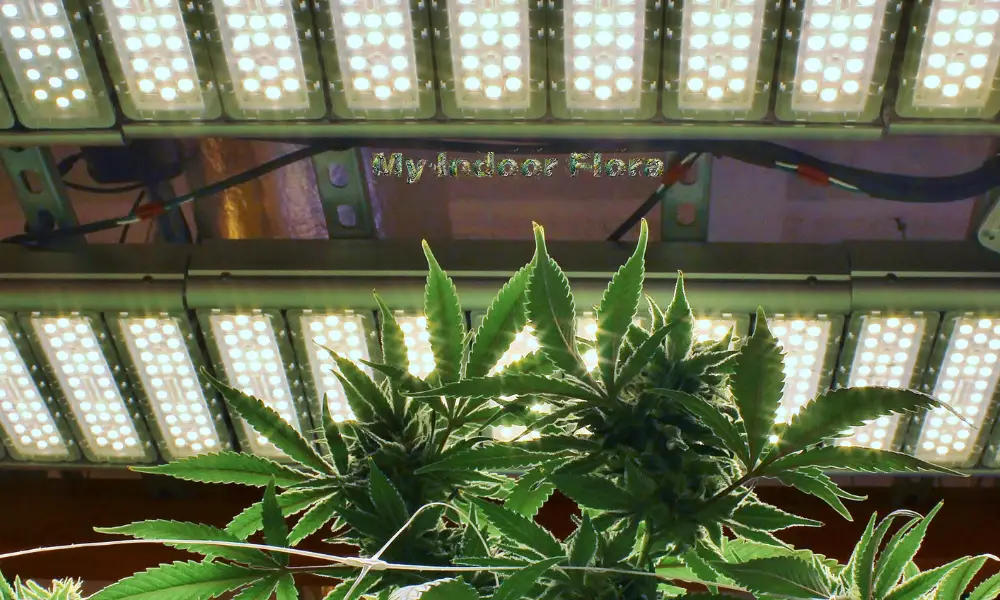
The role of light in plant growth
Light is a crucial factor in the process of photosynthesis, where plants convert light energy into the chemical energy needed for growth. Different plants have varying light requirements, and insufficient light can lead to leggy growth, weak stems, and poor overall health.
Types of grow lights for indoor gardening
1. LED
LED grow lights are energy-efficient, long-lasting, and produce less heat than other types of grow lights. They are available in a wide range of spectra, allowing you to choose the optimal light for your specific plants.
2. Fluorescent
Fluorescent grow lights, such as T5 or compact fluorescent lights (CFLs), are affordable and well-suited for small indoor gardens or individual plants. They provide a broad spectrum of light, but their intensity may be lower than LED or high-intensity discharge (HID) lights.
3. Incandescent
Incandescent grow lights are generally the least efficient and least recommended option for indoor gardening. They produce significant heat and have a shorter lifespan compared to LED or fluorescent lights.
Choosing the right grow light setup for your space
Consider factors such as the size of your indoor garden, the specific light requirements of your plants, and the available space for grow light installation when selecting a grow light setup. Options range from simple clamp-on lights for individual plants to larger systems that can accommodate multiple plants or an entire indoor garden.
5. Humidity Trays
Indoor environments can often be too dry for many houseplants, particularly those native to tropical or subtropical regions. Humidity trays are a simple and effective way to increase the humidity around your plants, promoting healthier growth and reducing the risk of problems such as leaf curl or browning.
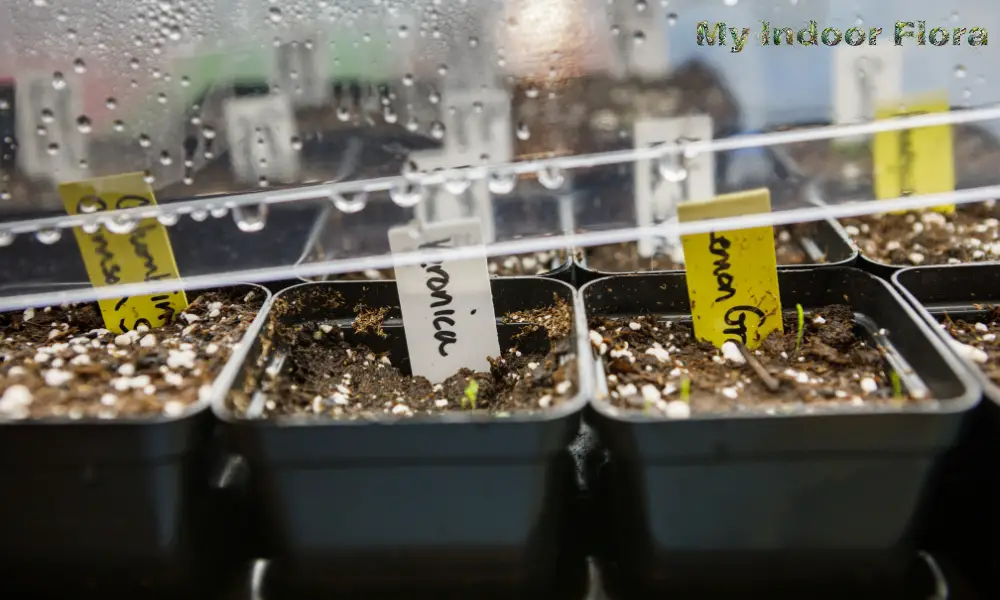
Benefits of humidity trays for indoor plants
Humidity trays help maintain a consistent moisture level in the air surrounding your plants, which can improve their overall health and vitality. Increased humidity can also reduce the likelihood of common indoor plant pests, such as spider mites and aphids, which thrive in dry conditions.
Selecting the right size and material for your humidity tray
Choose a humidity tray that fits the size of your plant’s pot and has enough depth to hold water without overflowing. Humidity trays are typically made from plastic, metal, or ceramic materials. Plastic trays are lightweight and affordable, while metal and ceramic trays offer greater durability and aesthetics.
Proper usage and maintenance of humidity trays
To use a humidity tray, simply fill it with water and place your plant’s pot on top of it. The water will evaporate, creating a humid microclimate around your plant. Be sure to monitor the water level in the tray, refilling it as needed, and clean the tray periodically to prevent algae growth or buildup of mineral deposits.
6. Plant Stands and Shelves
Proper plant placement is crucial for ensuring they receive adequate light, airflow, and access for watering and maintenance. Plant stands and shelves are an excellent way to optimize your indoor garden’s layout and make it more visually appealing.
Importance of proper plant placement
Strategically placing your plants on stands or shelves can help maximize their exposure to light, particularly if you have limited window space or a variety of plants with different light requirements. Additionally, proper placement can improve air circulation, reducing the risk of disease and pest issues.
Types of plant stands and shelves
1. Wall-mounted
Wall-mounted plant stands or shelves are a space-saving option that can add a vertical element to your indoor garden. They are ideal for small spaces or for displaying plants with trailing or cascading growth habits.
2. Freestanding
Freestanding plant stands or shelves are versatile and portable, allowing you to easily rearrange your indoor garden as needed. They come in various sizes, materials, and designs, making it easy to find one that suits your aesthetic preferences and space requirements.
Choosing the right stand or shelf for your indoor garden
Consider factors such as the size and weight of your plants, the available floor or wall space, and your overall indoor garden design when selecting a plant stand or shelf. Opt for sturdy, durable materials that can support the weight of your pots and plants, and ensure the stand or shelf is appropriately sized to accommodate your plant collection.
7. Neem Oil
Neem oil, derived from the seeds of the neem tree, is a versatile and natural solution for managing pests and diseases in your indoor garden. It is non-toxic to humans and pets when used as directed, making it a popular choice for eco-conscious gardeners.
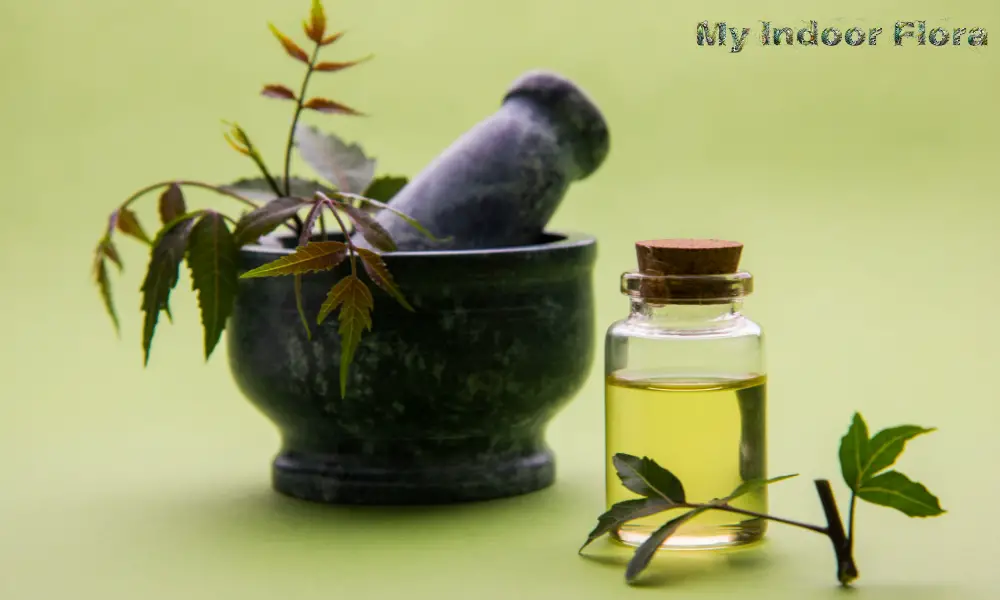
Benefits of neem oil for plant care
1. Pest control
Neem oil is effective against a wide range of common indoor plant pests, such as aphids, spider mites, and whiteflies. It works by disrupting the pests’ life cycle, preventing reproduction and feeding, and ultimately leading to their demise.
2. Fungicide
Neem oil also possesses antifungal properties and can be used to prevent and treat common fungal diseases like powdery mildew and black spot.
How to use neem oil safely and effectively
To use neem oil, dilute it with water according to the product’s instructions, and apply the solution to your plants using a spray bottle. Be sure to cover all plant surfaces, including the undersides of leaves, and repeat the application every 7-14 days, or as needed. Apply neem oil in the early morning or evening to prevent potential phytotoxicity (plant damage) caused by the interaction between the oil and sunlight.
Precautions when using neem oil
While neem oil is generally safe for humans and pets, it can be harmful to beneficial insects, such as bees and ladybugs. To minimize any potential harm, apply neem oil only when necessary and avoid spraying during times when these beneficial insects are active. Also, always follow the manufacturer’s instructions for proper dilution and application.
8. Fertilizers
Providing your indoor plants with the right nutrients is crucial for their growth and overall health. Fertilizers are an essential component of a successful indoor garden, ensuring your plants receive the necessary elements for optimal development.
The role of fertilizers in plant growth
Fertilizers supply plants with the essential nutrients they need for growth, including macronutrients like nitrogen, phosphorus, and potassium, as well as micronutrients such as iron, manganese, and zinc. Different plant species have unique nutrient requirements, and using the appropriate fertilizer can make a significant difference in your plants’ health and appearance.
Types of fertilizers for indoor plants
1. Liquid
Liquid fertilizers are easily absorbed by plant roots and can be quickly applied by mixing them with water. They are ideal for indoor plants as they allow for precise control over nutrient levels and can be applied during regular watering.
2. Granular
Granular fertilizers are solid pellets that slowly release nutrients over time. They are typically applied to the soil surface and can be a convenient option for long-term feeding. However, they may not be as well-suited for indoor plants, as they can be more challenging to measure and apply in small amounts.
3. Organic
Organic fertilizers, such as compost, worm castings, or fish emulsion, provide a natural source of nutrients for your plants. These fertilizers generally have a slower nutrient release and can improve the overall soil structure, but they may have a less predictable nutrient content compared to synthetic fertilizers.
Selecting the right fertilizer for your indoor plants
Consider your plants’ specific nutrient needs, your preferred method of application, and any personal preferences for organic or synthetic products when selecting a fertilizer. Be sure to follow the manufacturer’s instructions for proper application rates and frequency to prevent nutrient imbalances or potential plant damage.
9. Soil and Potting Mixes
Choosing the right soil or potting mix is essential for the health and well-being of your indoor plants. The proper medium will provide adequate drainage, aeration, and nutrient retention, promoting healthy root growth and overall plant development.
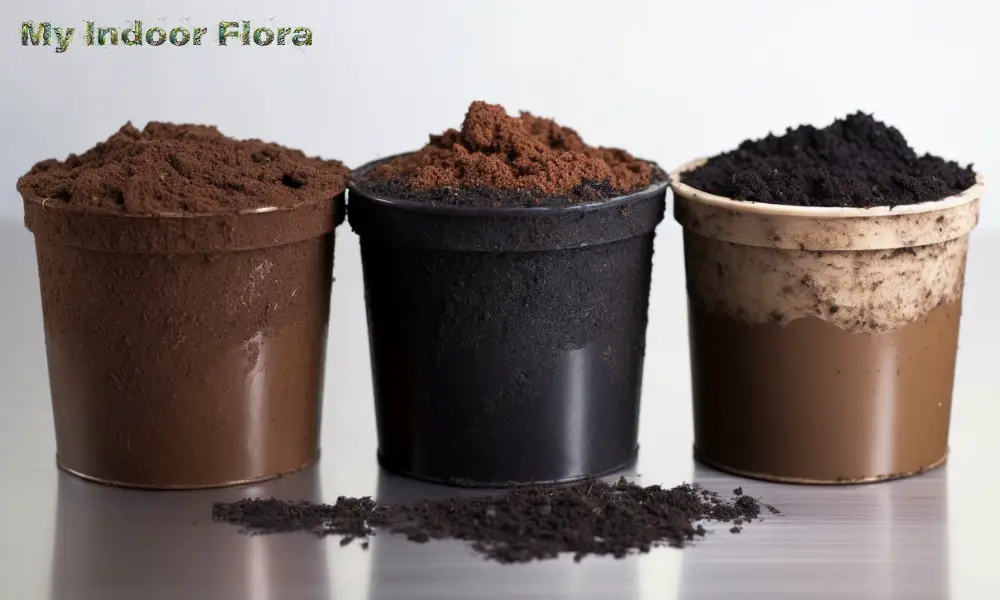
Factors to consider when choosing soil or potting mix
1. Drainage
Good drainage is crucial for preventing root rot and other moisture-related issues. Look for a soil or potting mix with ingredients such as perlite, vermiculite, or sand that promote drainage and prevent waterlogging.
2. Aeration
A well-aerated soil or potting mix will ensure your plant’s roots have access to sufficient oxygen, promoting healthy root growth and preventing compaction. Components such as peat moss, coco coir, or bark can improve aeration in your soil or potting mix.
3. Nutrient retention
Your soil or potting mix should retain essential nutrients while still allowing excess water to drain away. A balanced mixture of ingredients, such as peat moss, compost, and vermiculite, can provide both nutrient retention and proper drainage.
Customizing your soil or potting mix for specific plants
Different plants have unique soil requirements, such as pH or specific nutrient needs. Consider customizing your soil or potting mix by adding amendments like lime (to raise pH) or sulfur (to lower pH) or incorporating additional organic matter or fertilizer for plants with higher nutrient demands. Research your specific plant species to determine their ideal soil conditions and tailor your soil or potting mix accordingly.
10. Plant Labels and Markers
Plant labels and markers are an invaluable tool for keeping track of your indoor plants, especially when you have a diverse collection with varying care requirements. They help ensure you provide each plant with the appropriate care and can prevent confusion when it comes to watering, fertilizing, and other maintenance tasks.

Benefits of using plant labels and markers
- Organization: Plant labels help you stay organized and maintain a clear understanding of each plant’s specific care needs.
- Identification: Labels make it easier to identify your plants, especially if you have a large collection or similar-looking species.
- Care reminders: Including care information on the labels, such as watering frequency, light requirements, and fertilization schedules, can serve as a helpful reminder and ensure consistent plant care.
Types of plant labels and markers
1. Plastic labels
Plastic labels are affordable, durable, and resistant to moisture. They come in various colors and shapes, allowing you to choose a style that complements your indoor garden. You can write on them with a permanent marker or use a label maker to create adhesive labels.
2. Wooden labels
Wooden labels provide a natural, eco-friendly option for labeling your indoor plants. They can be easily written on with a pen, pencil, or marker, but keep in mind that they may not be as durable or water-resistant as plastic labels.
3. Metal labels
Metal labels offer a durable, long-lasting solution for plant identification. They can be embossed or engraved with plant names and care information, making them resistant to fading or smudging. Metal labels are typically more expensive than plastic or wooden labels but can add an elegant touch to your indoor garden.
Tips for creating effective plant labels and markers
- Include essential information: Be sure to note the plant’s common and scientific names, as well as any specific care requirements (e.g., watering frequency, light preferences, fertilization schedule).
- Use clear, legible writing: Ensure your plant labels are easy to read, either by using a permanent marker, a label maker, or engraving/embossing on metal labels.
- Keep labels up to date: Update your plant labels as needed, particularly if you adjust your care routine or repot your plants.
Additional Useful Tools and Supplies for Indoor Gardeners
While the top 10 must-have tools and supplies cover the essential aspects of indoor plant care, there are numerous other accessories that can make the process even more enjoyable and efficient. Here are a few more tools and supplies to consider incorporating into your indoor gardening routine:
1. Watering Globes and Self-Watering Planters
These innovative solutions help ensure your plants receive consistent moisture, particularly during periods when you may be away or unable to water them manually.
Watering globes are decorative glass or plastic bulbs that slowly release water into the soil as it dries. They are an excellent option for maintaining consistent moisture levels in your plants’ soil, especially if you have a busy schedule or are going on vacation.
Self-watering planters feature built-in reservoirs that hold water, which is gradually absorbed by the plant’s roots as needed. These planters help reduce the risk of over-watering and provide a steady supply of moisture to your plants.
2. Digital pH and Nutrient Meters
Monitoring your soil’s pH and nutrient levels is crucial for maintaining your plants’ overall health. Digital pH and nutrient meters allow you to quickly and accurately assess these factors, helping you make informed decisions about soil amendments and fertilization.
3. Pest Control Solutions
Keeping your indoor garden free of pests is vital for the health and well-being of your plants. In addition to neem oil, mentioned earlier, consider using other natural pest control solutions such as insecticidal soap, diatomaceous earth, or sticky traps to manage common indoor plant pests like aphids, spider mites, and fungus gnats.
4. Plant Support Structures
Some indoor plants, particularly climbing or vining species, require support structures to maintain their desired shape and growth pattern. Consider incorporating trellises, stakes, or moss poles into your indoor garden to provide the necessary support for your plants.
5. Trowel and Hand Cultivator
A trowel and hand cultivator may not be indispensable for every indoor gardener, but they can offer convenience and efficiency for certain tasks, making them a valuable addition to your indoor gardening toolkit.

A trowel is a small, handheld tool with a scoop-shaped blade that can be helpful for repotting and transplanting indoor plants. It simplifies the process of scooping out soil and creating a space for the plant’s root ball, ensuring a smooth and efficient transplanting experience.
A hand cultivator is a small, handheld tool with prongs designed for loosening and aerating the soil. It is particularly beneficial for indoor plants that require well-draining soil or are prone to root rot. By promoting better air circulation and water penetration, a hand cultivator helps maintain optimal soil conditions for your plants.
Both a trowel and hand cultivator can also assist in incorporating soil amendments, such as fertilizer, compost, or perlite, into your potting mix or the top layer of soil. This ensures even distribution of the amendments, promoting better nutrient availability and overall plant health. Though not strictly essential, these tools can significantly enhance your indoor gardening experience and facilitate proper plant care.
Conclusion
Caring for your indoor plants requires an array of essential tools and supplies to ensure their optimal health and growth. From watering cans and soil moisture meters to grow lights, humidity trays, and plant labels and markers, investing in these essential plant care tools will help you maintain a thriving indoor garden that brings beauty and tranquility to your living space. With the proper tools and knowledge, you’ll be well-equipped to address your plants’ unique needs and create an environment in which they can flourish.
